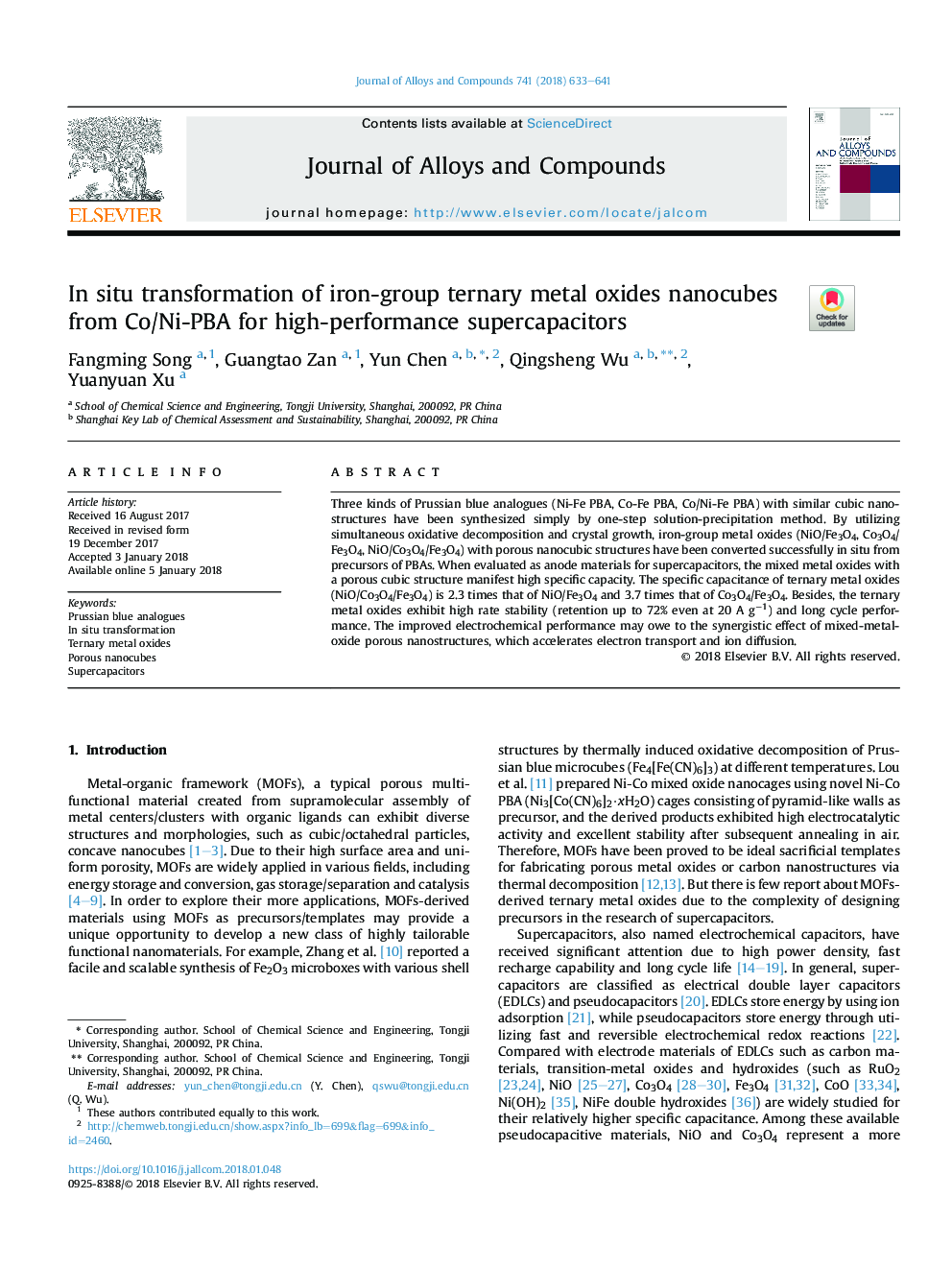| Article ID | Journal | Published Year | Pages | File Type |
|---|---|---|---|---|
| 7993620 | Journal of Alloys and Compounds | 2018 | 9 Pages |
Abstract
Three kinds of Prussian blue analogues (Ni-Fe PBA, Co-Fe PBA, Co/Ni-Fe PBA) with similar cubic nanostructures have been synthesized simply by one-step solution-precipitation method. By utilizing simultaneous oxidative decomposition and crystal growth, iron-group metal oxides (NiO/Fe3O4, Co3O4/Fe3O4, NiO/Co3O4/Fe3O4) with porous nanocubic structures have been converted successfully in situ from precursors of PBAs. When evaluated as anode materials for supercapacitors, the mixed metal oxides with a porous cubic structure manifest high specific capacity. The specific capacitance of ternary metal oxides (NiO/Co3O4/Fe3O4) is 2.3 times that of NiO/Fe3O4 and 3.7 times that of Co3O4/Fe3O4. Besides, the ternary metal oxides exhibit high rate stability (retention up to 72% even at 20Â AÂ gâ1) and long cycle performance. The improved electrochemical performance may owe to the synergistic effect of mixed-metal-oxide porous nanostructures, which accelerates electron transport and ion diffusion.
Keywords
Related Topics
Physical Sciences and Engineering
Materials Science
Metals and Alloys
Authors
Fangming Song, Guangtao Zan, Yun Chen, Qingsheng Wu, Yuanyuan Xu,
